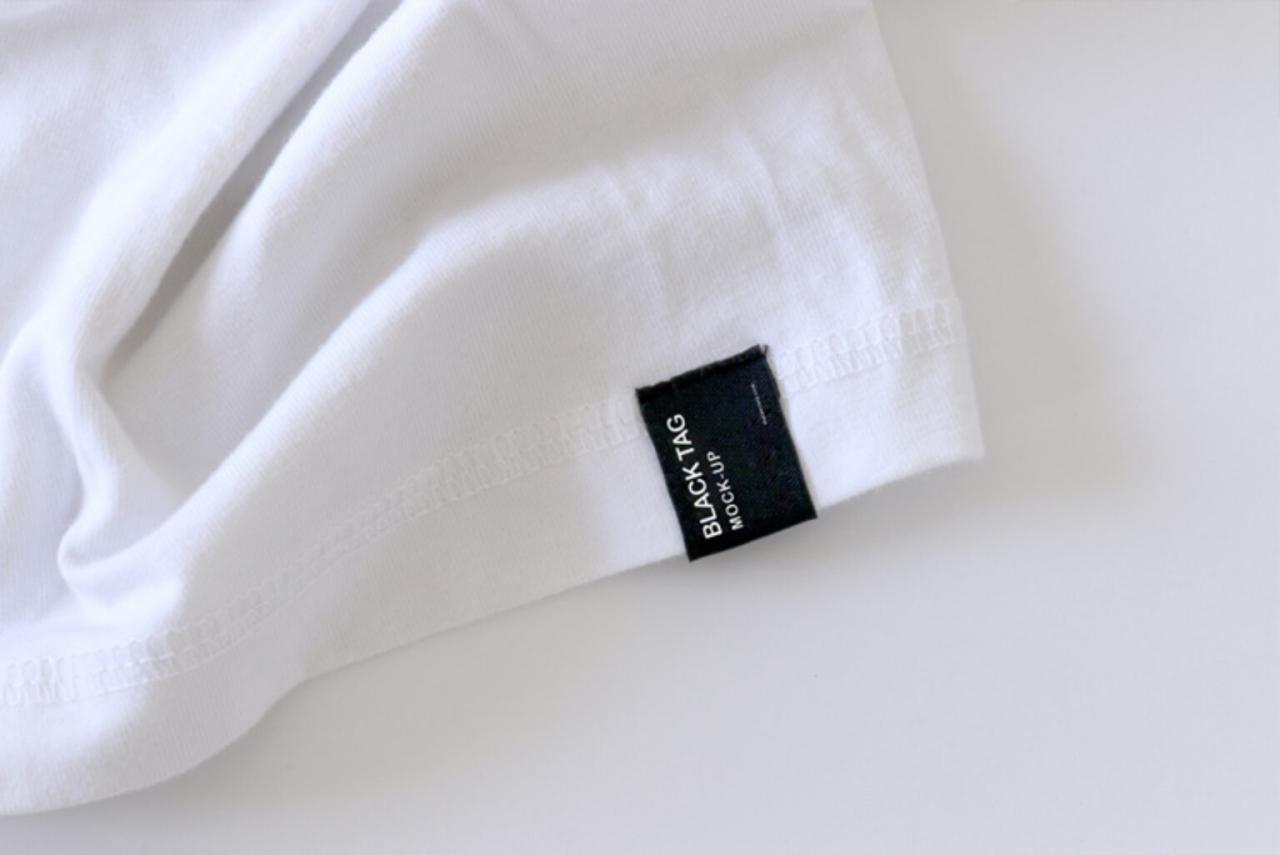
T-Shirt Tag Mockup: A Comprehensive Guide for Designers and Marketers
Introduction
In the realm of apparel design and marketing, presenting your creations in the most visually compelling manner is paramount. One essential element that often goes unnoticed yet plays a crucial role in enhancing the perceived value and professionalism of your products is the T-shirt tag mockup. A well-crafted tag mockup can elevate your designs, showcase essential branding elements, and provide a realistic representation of how your T-shirt will look once produced.
This article delves into the multifaceted world of T-shirt tag mockups, exploring their importance, types, creation process, and best practices. Whether you’re a seasoned designer or just starting out, this comprehensive guide will equip you with the knowledge and skills to create stunning tag mockups that will make your T-shirts stand out.
Importance of Tag Mockups
T-shirt tag mockups serve several key purposes that contribute to the success of your apparel line:
1. Enhanced Visual Appeal:
A tag mockup provides a realistic and visually appealing representation of your T-shirt design. By showcasing the tag with its branding elements, you can elevate the perceived value of your product and make it more appealing to potential customers.
2. Brand Representation:
The T-shirt tag is a prime opportunity to display your brand logo, tagline, and other essential branding elements. A well-designed tag mockup ensures that these elements are prominently featured and consistent with your overall brand identity.
3. Professional Presentation:
Mockups present your designs in a professional and polished manner, giving potential customers confidence in the quality and authenticity of your products. They demonstrate attention to detail and enhance the credibility of your brand.
4. Virtual Sampling:
Tag mockups allow you to experiment with different tag designs and branding elements without the need for physical samples. This saves time and resources while enabling you to fine-tune your design before committing to production.
Types of Tag Mockups
Based on their purpose and presentation, T-shirt tag mockups can be categorized into different types:
1. Photorealistic Mockups:
These mockups strive to create a highly realistic representation of the T-shirt tag as if it were attached to an actual garment. They typically feature high-resolution images of tags with detailed stitching, textures, and folds.
2. Flat Lay Mockups:
Flat lay mockups depict the T-shirt tag lying flat on a surface. They provide a clear and straightforward view of the tag design, making them ideal for showcasing branding elements or close-up details.
3. 3D Mockups:
3D mockups offer a dynamic and immersive view of the T-shirt tag. They allow you to rotate and manipulate the tag, providing a more comprehensive understanding of its appearance from different angles.
Creation Process
Creating a T-shirt tag mockup involves several steps:
1. Design the Tag:
Begin by designing the tag using graphic design software. Consider the size, shape, color, and branding elements that will best represent your brand.
2. Create the Template:
Create a template in a compatible software program (e.g., Adobe Photoshop) that matches the dimensions and shape of the tag. Import your tag design into the template.
3. Add Wrinkles and Shadows:
To enhance realism, add subtle wrinkles and shadows to the tag. Use filters or adjustment layers to create a natural and worn-in look.
4. Place on T-shirt:
Position the tag on a T-shirt template or use a photorealistic T-shirt mockup. Adjust the placement and orientation to achieve the desired aesthetic.
5. Save and Export:
Save the mockup in a high-quality image format (e.g., PNG or JPEG) and export it for use in marketing materials or online presentations.
Best Practices
To create effective and visually appealing T-shirt tag mockups, follow these best practices:
1. Use High-Resolution Images:
Ensure that both the tag design and the T-shirt template are in high resolution to maintain clarity and crispness.
2. Pay Attention to Details:
Accurately reproduce the stitching, folds, and textures of the tag to enhance its realism.
3. Experiment with Lighting:
Adjust the lighting conditions in your mockups to create different moods and emphasize specific design elements.
4. Consistent Branding:
Maintain consistency between the tag design and your overall brand aesthetic. Use the same colors, fonts, and styles throughout.
5. Showcase Context:
Place the tag mockup within a suitable context (e.g., on a hanger, folded in a box) to provide a better understanding of how it will appear in real-world scenarios.
FAQ
1. What software is used to create tag mockups?
Popular software options include Adobe Photoshop, Illustrator, and GIMP.
2. Where can I find T-shirt tag templates?
There are numerous websites and marketplaces that offer free and premium T-shirt tag templates.
3. How do I make my tag mockups look realistic?
Add wrinkles, shadows, and attention to details to enhance the realism of your mockups.
4. Can I use tag mockups to create product packaging?
Yes, tag mockups can be used to create realistic representations of T-shirt packaging, such as hang tags and labels.
5. How can I share my tag mockups with clients or colleagues?
Export your mockups in a high-quality image format and share them via email, social media, or cloud storage platforms.
Conclusion
T-shirt tag mockups are essential tools for designers and marketers alike. By showcasing your designs and branding elements in a realistic and visually appealing manner, you can enhance the perceived value of your products and establish a stronger connection with your target audience.
Remember, the key to creating effective tag mockups lies in attention to detail, consistent branding, and the use of high-quality resources. By following the tips and techniques outlined in this article, you can create stunning mockups that will elevate your T-shirt designs and make your brand stand out in the competitive marketplace.






